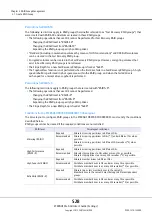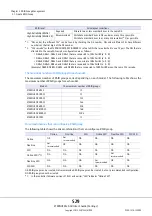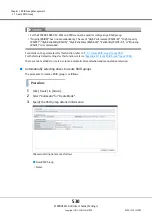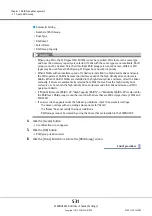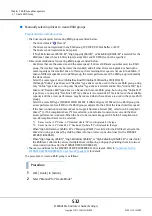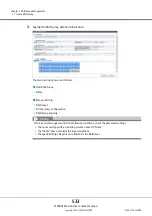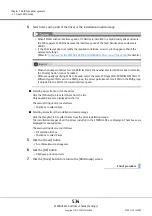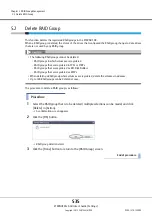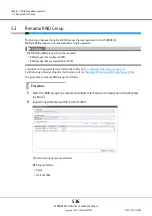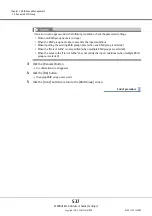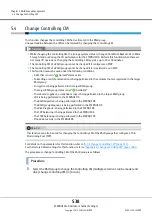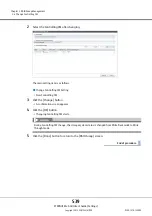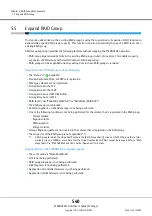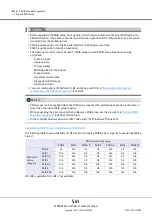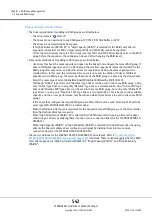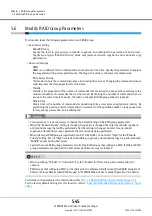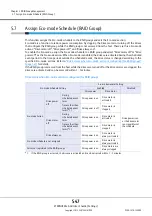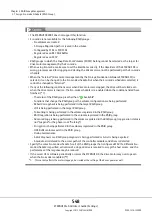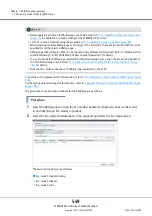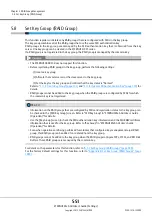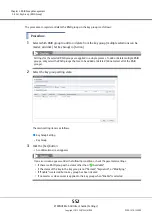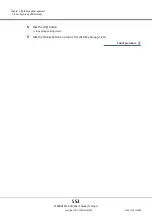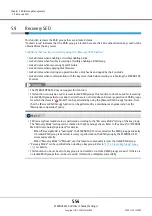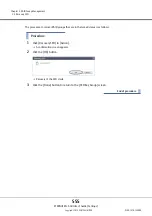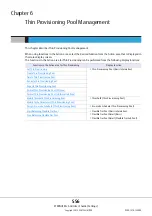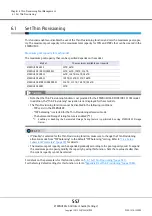
Chapter 5 RAID Group Management
5.5 Expand RAID Group
ETERNUS Web GUI User’s Guide (Settings)
Copyright 2015 FUJITSU LIMITED
P2X0-1270-13ENZ0
542
Requirements for selecting drives
•
The drive requirements for adding to RAID groups are listed below.
-
The drive status is "
Present"
-
The drives are not registered in any RAID group, TPP, FTRP, REC Disk Buffer, or EXCP
-
The drives are not registered as hot spares
-
If "High Performance (RAID1+0)" or "High Capacity (RAID5)" is selected for the RAID Level after an
expansion, drives that are 6TB or larger (except SSDs and SSD SEDs) cannot be specified.
(Note that when drives that are 6TB or larger (except SSDs and SSD SEDs) already exist in the RAID
group before the expansion, these drives can be used after changing the RAID level.)
•
Drive recommendations for adding to RAID groups are listed below.
-
Use drives that have the same capacity and speed as the drives that configure the target RAID group. If
drives of different capacities exist in a RAID group, the smallest capacity becomes the standard for the
RAID group after expansion, and all other drives are regarded as having the same capacity as the
smallest drive. In this case, the remaining drive space is not used. In addition, if drives of different
speeds exist in a RAID group, the access performance of the RAID group is reduced by the slower drives.
-
Select the same type of drive (Online/Nearline/SSD/Online SED/Nearline SED/SSD SED).
(Although "Online" type drives and "Nearline" type drives can be used in the same RAID group, using
only "Online" type drives or using only "Nearline" type drives is recommended. Also, "Online SED" type
drives and "Nearline SED" type drives can be used in the same RAID group, but using only "Online SED"
type drives or using only "Nearline SED" type drives is recommended. This is because the available
capacity and the access performance may be reduced when these drives are used in the same RAID
group.)
-
If the drives that configure the target RAID group are SSDs, SSDs must be used. Selecting SSDs with the
same type (SSD-M/SSD/SSD-M SED) is recommended.
-
When the Dedicated Hot Spare is registered for the expansion target RAID group, use the drive smaller
than the Dedicated Hot Spare capacity.
-
When "High Performance (RAID1+0)" is selected for the RAID level after changing, allocate the drives
(mirroring pair drives) by dividing them into two or more connection lines (for the ETERNUS DX500 S3/
DX600 S3).
-
When "High Capacity (RAID5)" or "High Reliability (RAID6)" is selected for the RAID level after changing,
allocate the drives (multiple drives configuring a striping) by dividing them into two or more
connection lines (for the ETERNUS DX500 S3/DX600 S3).
•
There are conditions for the ETERNUS DX8700 S3/DX8900 S3 drive layout. Refer to
ETERNUS DX8700 S3/DX8900 S3 drive layout" (page 528)
for details. These conditions apply when the RAID
level after expansion is "High Performance (RAID1+0)", "High Capacity (RAID5)", and "High Reliability
(RAID6)".
Summary of Contents for Eternus DX200F
Page 2: ...This page is intentionally left blank ...
Page 1082: ......

